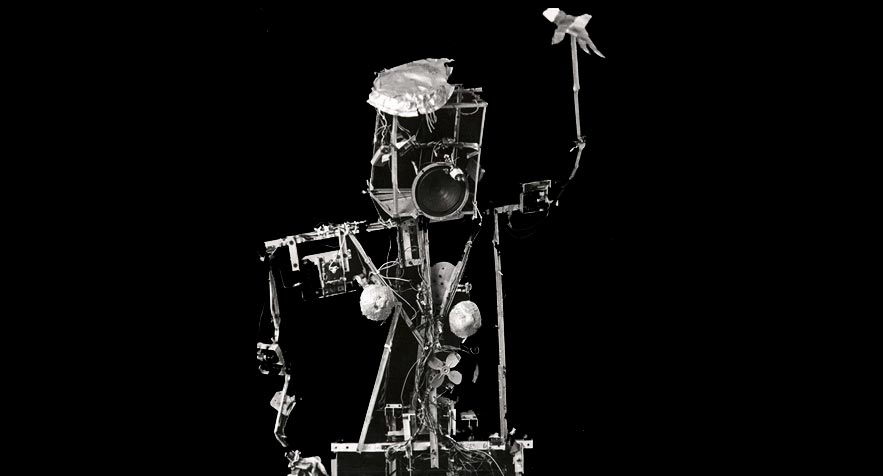Marshall McLuhan pointed out that larte has the ability to predict the future. In the introduction to his book Understainding Media he defines larte as a “warning system” that directs us to what is going to develop in the future, and allows us to “prepare for it.” McLuhan states, “larte as a radar system takes on the function of indispensable perceptual training.” In 1964, when his book was published, artist Nam June Paik had just built his robot K-456 to conduct experiments on the technologies that would begin to influence society. He had previously worked with television, challenging the ways in which it is habitually consumed, and would later create art with live satellite broadcasts in order to use the new media not so much as a form of entertainment, but to point us to their poetic and cross-cultural capabilities (which are still largely untapped today). The Paiks of our time, of course, now work with the Internet, digital images, and Artificial Intelligence. Their works and research are again a warning system for the developments that the future holds.
Because I was interested in knowing what artists have to say aboutArtificial Intelligence, I organized several conferences between artists and engineers last year. The reason for looking carefully at Artificial Intelligence lies in the fact that one of the most important issues today is how proficient Artificial Intelligence will become and what risks might come from it. There is a lot of basic research at the moment on these issues.
Several contemporary artists are currently following its development very closely. Through their work they are articulating various doubts about the promises of Artificial Intelligence and reminding us not to associate only the term Artificial Intelligence with positive aspects. The artists are contributing to the discussion on Artificial Intelligence with their peculiar perspective and specifically with their reflections on image-making, creativity and programming as a medium of artistic despression.
 |
| Nam June Paik, K-456 (1964) |
But what do contemporary artists have to say aboutArtificial Intelligence? Hito Steyerl, an artist who works with documentary and experiential films, considers two aspects that we should keep in mind about the implications of Artificial Intelligence for society: first, Artificial Intelligence is often overrated and the noun intelligence is misleading (to counter this, she uses the term artificial stupidity). Second, she points out that programmers make algorithms that are invisible but are visible through images, and to better understand and interpret these images we should turn to the experience of artists.
Rachel Rose, a video artist who reasons about the questions posed by Artificial Intelligence, employs computer technology in the creation of her works: her films create, for the viewer, an experience of materiality through moving image. This artist uses collages and overlays of material to manipulate sound and images, and the editing process is perhaps the most important aspect of her work. She also believes that there are false expectations about Artificial Intelligence.
In most cases, the work of contemporary artists has resulted in reflections on the impact of Artificial Intelligence on existential questions of the self and our future interactions with nonhuman entities. Few, however, have used the technologies and innovations of Artificial Intelligence as material for their work. One exception is artist Ian Cheng, who has gone to great lengths in building entire worlds of artificial beings touching different levels of sentience and intelligence. Cheng sees the work of programmers working with AI as a new and sophisticated tool for experimenting with the parameters of our everyday social practices.
Thus, the involvement of artists on Artificial Intelligence will lead to new kinds of open research in art. Nevertheless, these possibilities are yet to be discovered, just like the possibilities of Artificial Intelligence. And as Artificial Intelligence will increasingly occupy our lives, the creation of a space that is non-deterministic and non-utilitarian in its plurality of perspectives and diversity of understandings will undoubtedly play an essential role.
This contribution was originally published in No. 3 of our print magazine Finestre Sull’Arte on paper. Click here to subscribe.
Warning: the translation into English of the original Italian article was created using automatic tools. We undertake to review all articles, but we do not guarantee the total absence of inaccuracies in the translation due to the program. You can find the original by clicking on the ITA button. If you find any mistake,please contact us.